Here’s What It Means When a Cat Wags Their Tail
Your cat may be anxious, overstimulated, excited, or angrily wagging their tail.
Published Sept. 20 2024, 9:39 a.m. ET
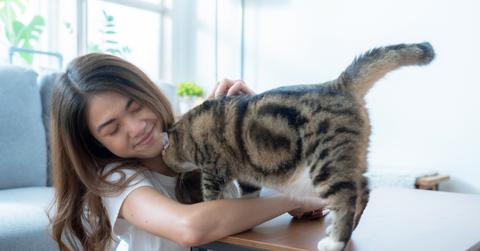
Knowing how to read your companion cat's body language can be a helpful tool in knowing when to give them space and when to engage their playful side. As a cat dad to two rescue cats, there is no happier feeling than seeing my cats saunter over while playfully swishing their tails.
Making sense of why your cat is wagging her tail can help you bond with your companion kitty and better understand her mood. If you ever suspect your cat is excessively wagging their tail or in a constant state of anxiety, it's best to consult a trained behaviorist along with a trusted veterinarian to ensure your cat's wagging tail isn't a health concern.
A gentle tail wag indicates a playful, happy cat.
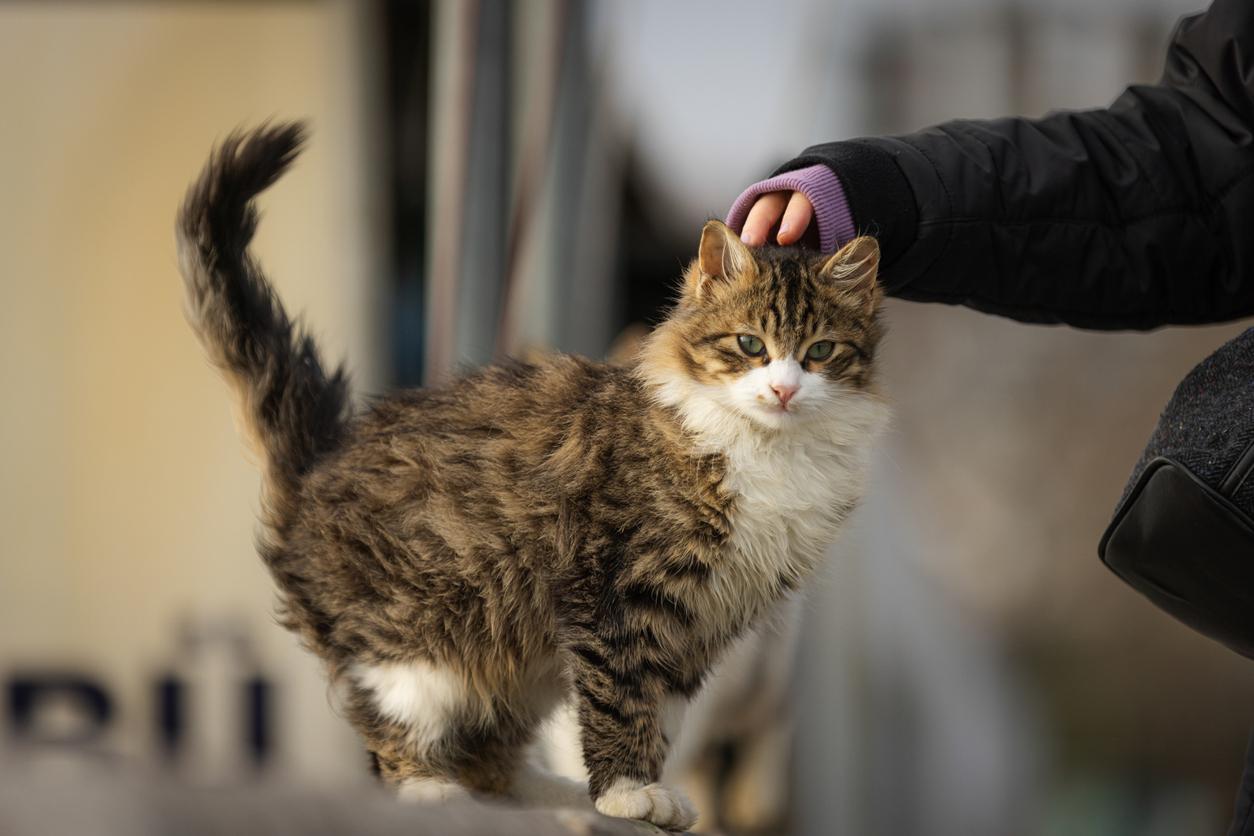
According to RSPCA Pet Insurance, your cat may gently wag her tail to indicate playfulness. A cat quivering her tail while the tail is pointed upwards means she is excitedly greeting you, per the source.
When my younger rescue cat greets me when I arrive home, her tail lightly wags while walking at a calm speed, and she often maintains eye contact while wagging and walking toward me.
You may hear some gentle purring accompanying this excited, gently wagging tail. So long as your cat has been receptive to gentle pets on the head or cheek in the past, you can reciprocate the love by affectionately petting them to greet them in return.
A tail wagging rapidly means your cat is angry.
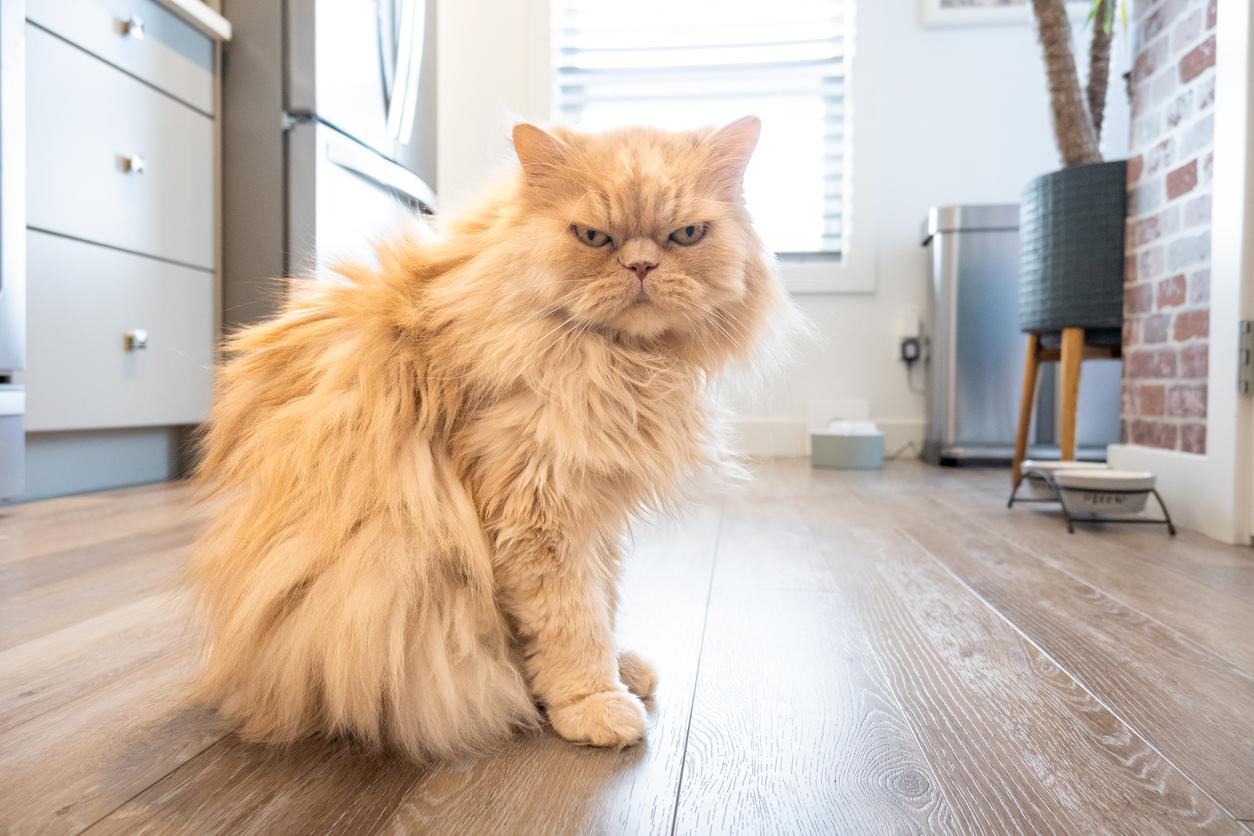
What might start as playfulness with your cat can quickly escalate to a rapidly wagging tail that indicates anger or irritation, per the pet food brand Sheba. It is helpful to pay attention to the whole picture, including your cat's body language, vocalizations, facial expressions, and preferences for touch.
Respect your cat's boundaries and stop touching them when their tail wags rapidly. They may be overstimulated, per Sheba, and need some time to calm themselves before reengaging with you.
A twitching tail means your cat is playfully on the hunt, or they may be irritated.
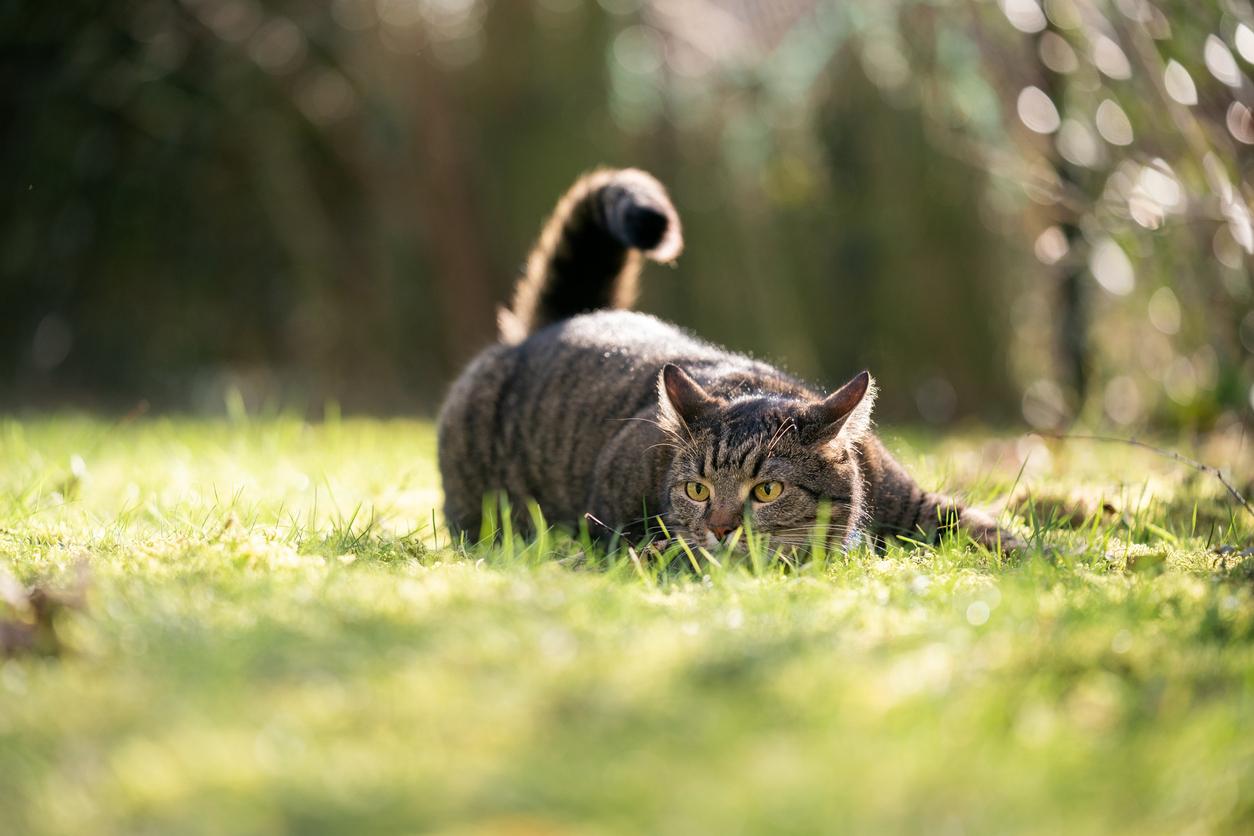
As Dr. Alison Gerken, DVM explained in an article for PetMD by Chewy, a cat employing their hunting instinct, or one who is in a playful mood, will wag their tail in a twitching manner, not unlike a rattlesnake.
However, Dr. Gerken notes tail wagging that looks like a twitch might also indicate annoyance, which may confuse cat parents who are unfamiliar with their cat's personality and tail-wagging cues.
Dr. Gerken writes in PetMD by Chewy that context clues are helpful for discerning your cat's mood. If a nearby toy caught your cat's eye, they're probably feeling playful or in a hunting mood, and that's probably the reason for your cat's twitchy tail wag. However, it could also mean they are frustrated, and you should give your cat space to calm down.
A bushy, wagging tail indicates your cat is frightened.
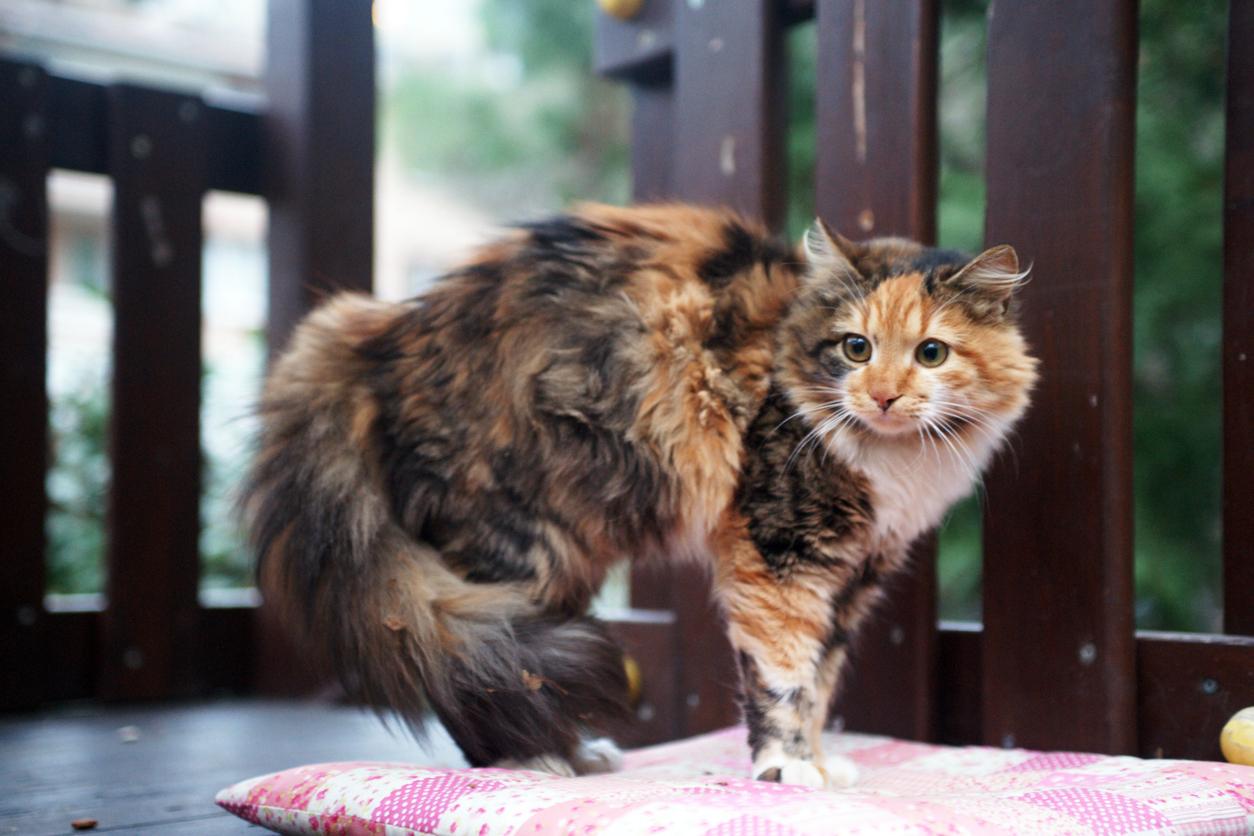
According to Sheba, a cat who is scared will contract the muscles in their tail, leading to the tail becoming extra bushy and fluffed as it wags. This unfortunate response means your cat may fear the individual, predator, or environment they are in.
Per Sheba, this reaction is an attempt by your cat to make themselves appear larger, and thus more intimidating, to their perceived threat. If it is just you and your cat safe at home, give your cat extra space, speak in a calm tone, and reassure her that she is safe. In my experience, the bushy wagging tail will eventually subside once your cat recognizes she is safe.
A tail that playfully wags from side to side means your cat is ready to pounce.
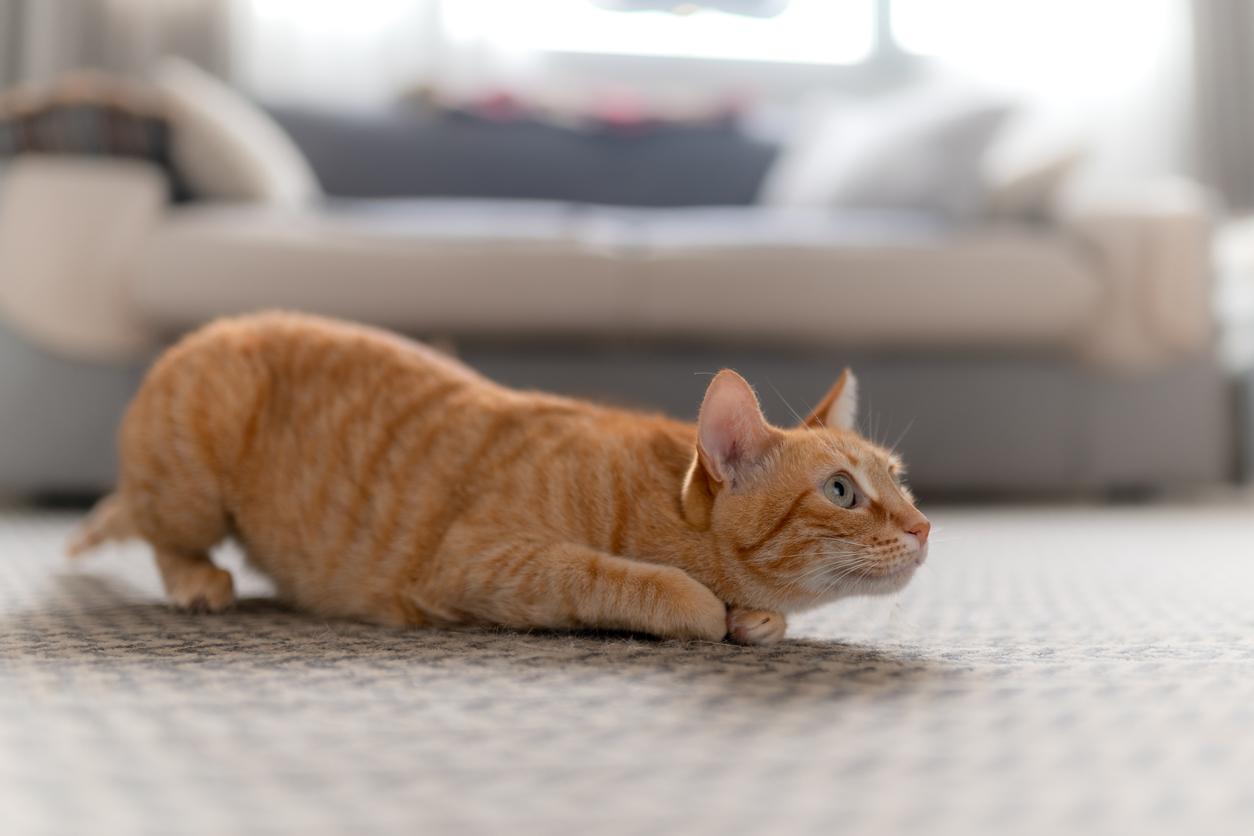
According to PetMD by Chewy, this tail-wagging movement is less like the twitchy hunting wag and more of a playful, energetic wag from side to side that means your cat is focused on someone — or something — and is preparing to bounce. Whether a toy, cat, or human caught your cat's eye, this side-to-side tail swish is a healthy, engaged behavior.